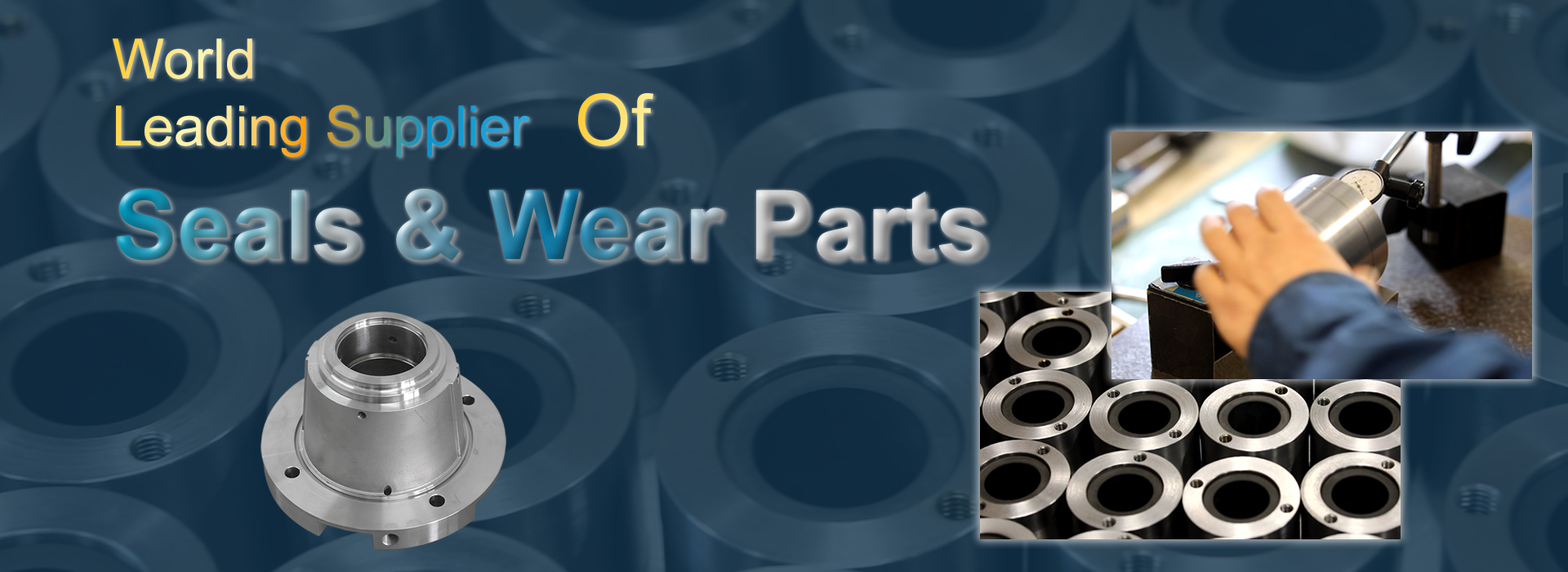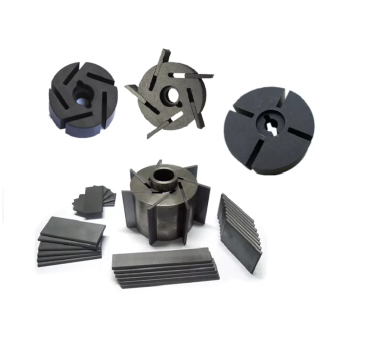A shaft sleeve is a mechanical component shaped like a cylindrical sleeve installed between a rotating shaft and a bearing. They act as a wear-resistant tool, protecting the shaft surface to allow smooth operation by preventing abrasion, corrosion, and contact with other interior pieces like bearings, seals, and the impeller. When the shaft sleeve is worn, it can be replaced separately rather than replacing the entire shaft, thereby reducing costs. Its smooth and uniform surface lets it fit well with the rotating shaft, enhancing the sealing effect.
Common Shaft Sleeve Materials and Their Advantages
While shaft sleeves come in different materials. Silicon carbide and alumina, carbon graphite, zirconia, and tungsten carbide are some popular options. Each material has its pros.
- Silicon Carbide and Alumina
As ceramic materials, silicon carbide, and alumina sleeves boast excellent corrosion resistance. They can also withstand high pressures and temperatures. They are harder and more durable than other materials, suitable for mechanical applications in harsh environments and high-performance requirements.
- Carbon Graphite
Graphite sleeves are a self-lubricating material that reduces friction and wear. They are also chemically inert and provide corrosion protection. Their strength is less than ceramic materials, but they are suitable for high temperatures or environments where lubricating oil is not allowed.
- Zirconia
Zirconia sleeves have high strength. Its toughness is excellent, which can prevent the material from breaking when impacted. In addition, this type of shaft sleeve also has electrical insulation and low thermal conductivity, which will not cause high temperatures during operation and affect performance.
- Tungsten Carbide
These sleeves are hard alloy and offer great wear resistance. They are hard-wearing but more brittle compared to other options.
When Should the Pump Shaft Sleeve be Replaced?
You can maximize pump service life with regular shaft sleeve inspection. Look for signs of wear. Though ceramic bushings may normally serve for years, certain indicators mean replacement is needed. Common reasons to replace include:
- Wear and Aging of Shaft Sleeves
Over extended periods of use, pump sleeves will experience wear from mechanical friction and contact with other components. Once the wear depth exceeds acceptable limits, it’s time for replacement. In addition, if there are obvious cracks and aging deformation on the shaft sleeve, it must be replaced promptly. Therefore, regular inspections are very important.
- Corrosion of Shaft Sleeve
Prolonged corrosive exposure can degrade the shaft sleeve material. For instance, acidic or alkaline fluids can damage sleeve bushings if they are not made of corrosion-resistant materials. The sealing effect will be affected, so it needs to be replaced.
- Seal Failure of Shaft Sleeve
Seals can fail prematurely if the shaft sleeve surface becomes excessively worn, cracked, or pitted from corrosion. This compromises the smooth surface required for a proper seal. The internal medium of the pump may leak, affecting the operation of the machine or causing shutdown.
- Excessive Vibration of Pumps
If the pump vibrates excessively, it may be caused by damage to the shaft sleeve. In this case, the condition of the shaft sleeve should be checked and replaced if necessary. Excessive vibration transferring to the shaft sleeve from the pump can accelerate material fatigue and wear. 
Where to Buy High-quality Shaft Sleeves?
Partnering with a shaft sleeve supplier with a strong industry reputation for quality products and service is crucial when sourcing these products. An ideal manufacturer understands the precise needs of pumps and rotary equipment and is committed to certified production processes and stringent testing standards. JUNTY is one such reputable brand that meets all of these requirements.
Headquartered in Chicago, Illinois, our brand, JUNTY, has supplied quality sealing solutions worldwide for over 20 years. We have stringent quality control processes to ensure every product guarantees top-notch reliability. Our experienced engineers allow us to deliver customized, engineer-backed sealing parts on time. We offer customizable ceramic sleeve bushings that can be produced in different material options to suit various application needs. Key advantages include:
- Protect the shaft from mechanical, chemical, and chemical-mechanical damage from aggressive fluids, bearings shells, and shaft seals
- Offer customization with high-performance ceramic materials like silicon carbide, alumina, zirconia, and tungsten carbide
- Shaft sleeves made from these ceramics using our precision technology and manufacturing protect critical pump surfaces from wear and damage
- Various materials with high thermal shock resistance, thermal conductivity, and wear resistance are suitable for different needs
- Maintain smooth operability and extend seal life by protecting contact surfaces from imperfections or abrasive wear
Conclusion
Overall, a shaft sleeve is a key protective component inside pumps. Made of corrosion and wear-resistant materials, it shields the shaft from damage to preserve mechanical seals and optimize pump performance. Regular inspection allows for catching potential issues early to avoid unnecessary repair costs. When in need, source high-quality shaft sleeves from trusted suppliers like JUNTY for reliable rotary equipment operation. For a tailored quote, please visit our website.
Read more: What are Rotor Vanes and Where Can They be Applied?
The Ultimate Guide to Choosing Containment Shell Using Zirconia Material





